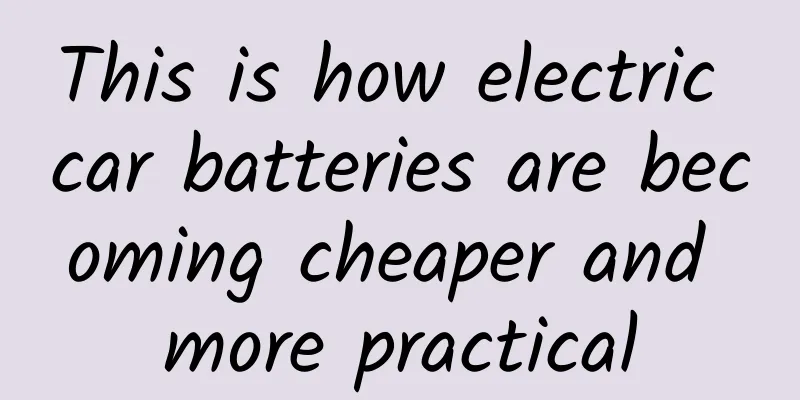This is how electric car batteries are becoming cheaper and more practical

|
Some 30 years after their invention, lithium-ion batteries have become the dominant energy storage system today. Today, nearly every new electric car on the market is powered by batteries whose performance has been steadily improving since their invention in 1990. However, the technology’s potential is still far from exhausted, as several manufacturers have recently demonstrated. The most obvious is the rapid development of lithium-ion batteries in terms of cost. About ten years ago, one kilowatt-hour of storage capacity cost about one thousand euros. Today it is only around one hundred euros. Stanley Whittingham predicts that in the future it could fall to fifty euros. Together with two other researchers, he received the Nobel Prize in 2019 for lithium-ion technology. At the same time, energy density will double, which will significantly increase the range or significantly reduce the space required for batteries. By then, a range of 600 to 700 kilometers may also become the standard configuration of mass-produced cars. One of the most important factors in battery optimization is the design of the battery. Currently, only a relatively small portion of the battery consists of active materials, i.e. the components directly responsible for storing energy. The vast majority of a complete electric vehicle battery is inactive materials, including not only the electrolyte, but also the packaging of the battery chemistry and simple electrical contacts and power lines. The reason for this imbalance is the traditional structural design. Most batteries currently consist of individual cells - usually pillow-shaped plastic soft packs, small prisms or cylinders - combined in a shell to form larger modules, and then assembled into a complete battery. Correspondingly, a large amount of packaging and assembly materials are required, which greatly increases the volume of the finished product, thereby increasing the cost and complexity of production. Looking at batteries from a different perspective If you can somehow reduce the volume of inactive materials, you can install active components in their place, increasing capacity without increasing volume. This process has a tendency to be pushed almost to the physical and chemical limits of lithium-ion batteries. It is almost impossible to reach this point. Chinese battery maker CATL recently made a huge optimization move by breaking the traditional modular structure of batteries and integrating battery cells directly into the battery pack. This approach will increase the weight energy density by 10% to 15%. Costs will be reduced by 20%. Batteries with the same capacity will be about one-fifth smaller. It is impressive that Tesla has adopted CATL batteries in some versions of the Model 3, and their new batteries are now gradually replacing Panasonic and LG Chem batteries. Volkswagen has also recently publicly committed to adopting the CTP strategy. The corresponding batteries will be first used in the Artemis model around 2025 and then used in all series. In the long run, battery structure design will become more flexible: this changing trend is "CTC technology", where the battery can be directly integrated into the chassis without a battery pack. In this way, the entire car becomes a mobile battery. CATL hopes to reach its goal in 2030. Tesla also seems to be working hard. However, using the common electrochemical principles of today, CTC technology still faces great challenges. Even with a small collision, the risk of fire will be high. The optimization of the installation space for inactive materials also opens up new potential for active materials. BYD is developing lithium iron phosphate batteries, and Toyota is developing solid-state batteries For example, lithium iron phosphate (LFP) technology seemed to have been marginalized due to its relatively large space requirements, but has recently regained attention. However, since the space required for packaging, contacts and leads is now smaller, the chemistry can take up more space. Compared with conventional lithium-ion batteries, the operating reliability is higher, so the spatial disadvantage is acceptable in this case. Even severe mechanical damage no longer leads to spontaneous combustion of the battery. In addition, lithium iron phosphate batteries can largely avoid the use of rare raw materials such as nickel, which is expensive, rare and potentially harmful to the environment. In addition to CATL, Chinese battery and automobile manufacturer BYD is also one of the leading manufacturers of lithium iron phosphate batteries. BYD recently applied its so-called blade battery technology to the Han series. Solid-state batteries are expected to do better in terms of safety. Since BYD's blade battery is not as prone to heat as traditional lithium-ion batteries when mechanically damaged, it is still filled with organic flammable electrolyte. In solid-state batteries, the component required as an ion transport medium is no longer liquid, but solid. Therefore, it will not leak or evaporate, and is less likely to catch fire. The technology could be available within a decade. Toyota, for example, is promoting cars with solid-state batteries, having so far been reserved about electric cars. A safe alternative coupled with a long-established development leader could change that. In addition, the use of other battery raw materials will be reduced in the future, and the most prominent material may be cobalt. Similarly, copper, graphite and even lithium will become the objects of elimination due to cost, supply bottlenecks, and environmental protection. However, as far as lithium is concerned, it will take quite some time to find a real alternative. After all, not all of the various new batteries reported around the world are suitable for use in cars. Even if they can be realized, the extremely long development and testing cycle means that it may take years or even decades from innovation to implementation. Lithium-ion batteries themselves are the best example. As a winner of Toutiao's Qingyun Plan and Baijiahao's Bai+ Plan, the 2019 Baidu Digital Author of the Year, the Baijiahao's Most Popular Author in the Technology Field, the 2019 Sogou Technology and Culture Author, and the 2021 Baijiahao Quarterly Influential Creator, he has won many awards, including the 2013 Sohu Best Industry Media Person, the 2015 China New Media Entrepreneurship Competition Beijing Third Place, the 2015 Guangmang Experience Award, the 2015 China New Media Entrepreneurship Competition Finals Third Place, and the 2018 Baidu Dynamic Annual Powerful Celebrity. |
<<: With its performance plummeting, will Nikon become the next Kodak?
Recommend
Underwater Archaeology: A Whisper Across Time
Produced by: Science Popularization China Author:...
How to improve the effect of information flow and double the conversion?
We all know that whether it is bidding or informa...
After viewing more than 100,000 information flow ads, I summarized these 4 optimization directions!
After reading this article, you will get the foll...
@Parents of college entrance examination candidates: Please check this college entrance examination dietary guide!
The college entrance examination is a big event f...
Android 5.1 is not available
Android 5.0 is the latest version released by Goo...
Android custom ListView to implement contact sorting
Source code introduction Android custom LISTVIEW ...
Some Apple iPhone 13/12 iOS 15 devices damage car Bluetooth hands-free system
According to 9to5 Mac, more and more iPhone users...
All things are connected and shared life is shared --- Huaxia IoT and Kuangen Network have successfully held the press conference on creating a shared city and the unveiling ceremony of the academician workstation
[[187056]] The sharing economy, which was hotly d...
Subvert your cognition: the probability of flipping a coin is not 50%
Audit expert: Liu Yuhang PhD, Beijing Internation...
Nexus and compact cameras couldn't save HTC from rapid decline
HTC released a number of new products in New York...
Is it expensive to produce Wuxi furniture mini program? Wuxi furniture applet production cost list
The mini program provides convenience for publici...
BMW CEO: By 2023, 20% of BMW cars will be electrified
Recently, Oliver Zips, CEO of BMW, a traditional ...
iPhone 6 screen is prone to damage! Do you use a screen protector or not?
Apple's iPhone has finally become bigger, and...
Universal formula for online event promotion and marketing planning!
In this article, the author will tell you about h...
This is a versatile activity plan!
A universal activity plan , so you don’t have to ...









